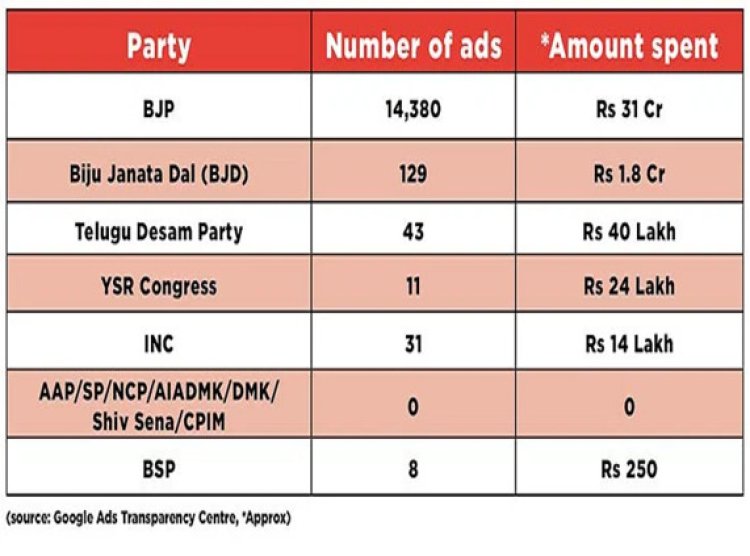BJP Leads Google Campaign Spending Ahead of Lok Sabha Elections
Google Ads Transparency Centre data reveals video ads prioritize campaign agendas; political parties expected to intensify advertising efforts in coming weeks

According to data released by the Google Ads Transparency Centre, the Bharatiya Janata Party (BJP) has significantly outspent its political rivals in Google campaigns, splurging over Rs 31 crore between January 1 and March 15 in preparation for the upcoming Lok Sabha elections.
The majority of BJP's advertisements prominently feature Prime Minister Narendra Modi and have been circulated in various languages to reach diverse demographics.
The Election Commission of India (ECI) announced the election dates on March 16, setting the stage for polls beginning April 19 and spanning seven phases until June 4.
In contrast, the Indian National Congress (INC) has allocated a mere Rs 14 lakh during the same period, amounting to less than 1% of BJP's Google ad expenditure. INC's ads predominantly showcase Rahul Gandhi and are primarily targeted at Hindi-speaking regions such as Uttar Pradesh, Bihar, West Bengal, and Maharashtra.

Following BJP's lead, the Biju Janata Dal (BJD) of Odisha emerges as the second-largest spender on Google ads, investing nearly Rs 1.30 crore between January 1 and March 15. BJD, currently in discussions with BJP for a pre-poll alliance, seeks to strengthen its digital presence in anticipation of both Assembly and Lok Sabha elections in Odisha.
Amidst the flurry of campaign expenditures, the significance of digital advertising has surged, complementing traditional mediums such as TV, Print, Radio, and OOH. As the election frenzy intensifies, parties strategize to allocate resources effectively.
The Election Commission mandates expenditure limits, with Lok Sabha candidates restricted to Rs 95 lakh and Assembly candidates to Rs 40 lakh. However, a substantial portion is channeled into advertising expenses, including digital campaigns, public meetings, rallies, hoardings, and pamphlets.
Google's stringent guidelines require advertisers to undergo identity verification and disclose funding sources for election ads. Notably, video ads have emerged as a pivotal component of political marketing strategies, with parties targeting Gen Z and millennials through dynamic visual content.
While the political landscape gears up for a high-stakes battle, the strategic allocation of campaign funds underscores the pivotal role of digital media in shaping electoral outcomes.

 Sumit Rawat
Sumit Rawat 










